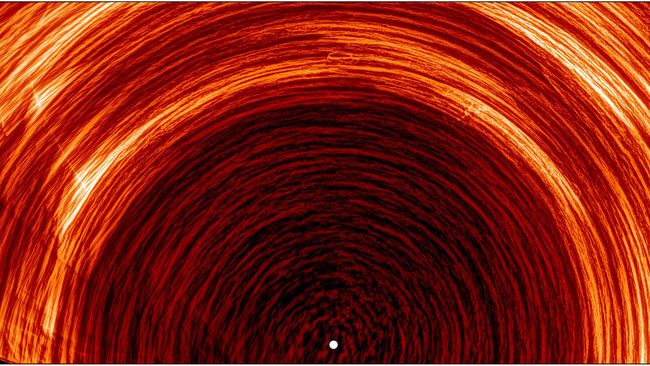Breakthrough Observations Near the Sun’s South Pole
The European Space Agency’s (ESA) Solar Orbiter has provided groundbreaking close-up views of the magnetic fields at the southern pole of the Sun, offering a new perspective on the Sun’s magnetic behavior. By observing these regions, a composite image showcasing bright arcs-magnetic structures moving at unexpected speeds-was created over an eight-day period in March 2025. This discovery is significant because it indicates that the Sun’s magnetic fields are migrating towards the poles much quicker than previously anticipated.
The Importance of Solar Magnetic Activity
The Sun’s magnetic activity follows an 11-year cycle, which plays a critical role in the emergence of sunspots, solar flares, and coronal mass ejections. These phenomena can significantly impact the near-Earth space environment, affecting satellite operations and power grids. A deeper understanding of this cycle is vital for predicting solar activity and preparing for space weather events.
New Insights from Solar Orbiter
Solar Orbiter’s mission marks a pivotal moment in solar observation as it tilted its orbit to 17 degrees, enabling scientists to observe the Sun’s south pole directly for the first time. Led by Lakshmi Pradeep Chitta from the Max Planck Institute for Solar System Research, the team utilized two key instruments: the Polarimetric and Helioseismic Imager (PHI) for measuring magnetic fields and surface motions, and the Extreme Ultraviolet Imager (EUI) for capturing hot plasma radiation. These tools have provided insights into how plasma and magnetic structures connect, focusing particularly on the chromosphere layer, which manifests as bright, elongated arcs over visible solar surfaces.
Unprecedented Observations of Supergranules
Remarkably, these observations have revealed the presence of supergranules-massive convection cells that act like boiling plasma bubbles, each spanning two to three Earth sizes. These structures are transferring magnetic fields towards the poles at speeds ranging from 32 to 72 km/h, aligning with the velocity of similar flows in lower latitudes but notably faster than theoretical models have predicted.
Expert Opinions on the Findings
“The supergranules at the poles function like a tracer substance,” notes Chitta. By observing their movements, researchers have for the first time been able to directly see the polar component of the global 11-year solar circulation. Co-author and director of the Max Planck Institute, Sami Solanki, emphasizes, “Solar Orbiter can now provide the missing link in this complex puzzle,” representing the onset of a new era in the study of solar poles.
The data from Solar Orbiter fills a crucial gap in understanding the magnetic engine that governs the solar cycle and forms the Sun’s magnetic field, influencing the entire solar system. Insights into the velocity and structure of magnetic field transport to the poles will enhance forecasts of solar cycle evolution and space weather phenomena relevant to Earth.

Source: ESA & NASA / Solar Orbiter / EUI-Team





